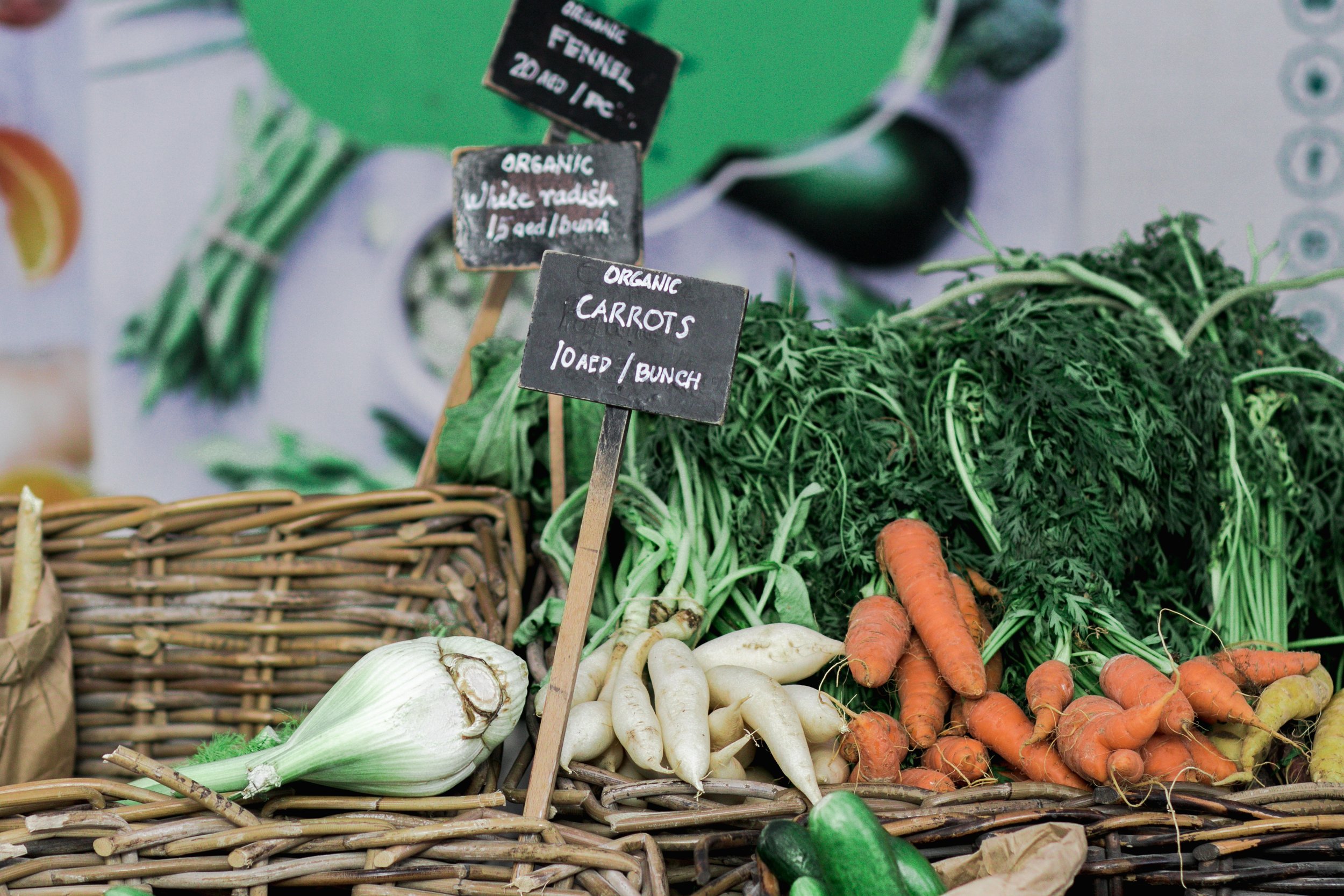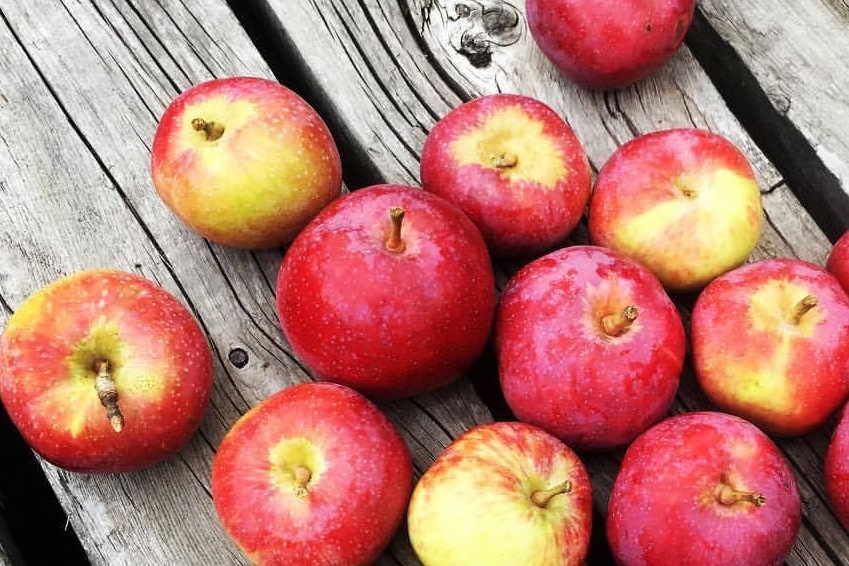Ethan Roland Soloviev is the EVP of Research at HowGood and an owner of High Falls Farm. He is the author of “Levels of Regenerative Agriculture” and “Regenerative Enterprise: Optimizing for Multi-Capital Abundance,” and is an international expert on regenerative agriculture, regenerative business, and permaculture design, with experience in 34 countries. Ethan spent a year traveling around the world, exploring Sweden, Kazakhstan, Japan, New Zealand, and Chile, studying the global diversity of apples.
PR: Everyone throws around the term “organic,” but it can be kind of fuzzy in our complicated food system. What does it really mean?
ES: For many years, organic was an undefined term that people used differently. However, in 2002, the United States Department of Agriculture wrote up a formal definition, standard, and certification system for organic that brought together and codified the different certification systems that had sprung up around the country. Now organic farming is a system of farm practices that aims to lessen the damage of agriculture by removing the use of synthetic material inputs and curbing some of the worst forms of chemical industrial agriculture. It encourages using biological materials and certain growing practices that can reduce the harm or sometimes improve the health of the ecosystem. “Organic” is highly codified and protected by law in the United States and elsewhere. If someone uses the term organic on their product, they have to be abiding by the standard.
PR: What is something you think every consumer should know about the organic standard when purchasing a product?
ES: The standard is large and the average consumer probably doesn’t want to read through it. However, some of the key hallmarks are that there are no synthetic fertilizers, no synthetic biocides, no genetically modified organisms, and there’s a certain level of good farming practice, like crop rotation, cover cropping, and effective management of animal manure. HowGood’s primer on farming is a good resource for understanding organic farming, especially when we look at the spectrum of agriculture’s environmental impact. Organic is an important step along the spectrum from the most damaging degenerative forms of agriculture to the most regenerative forms, but organic itself does not mean that you are getting all the way to regeneration.
PR: What does a farm or product need to do to get certified?
ES: I’m coming at this from two perspectives: I’m the EVP of Research here at HowGood, but I’m also a farmer. Right now I’m in the process of going after organic certification. To get certified, a farmer needs to find a certifier, and there are multiple third party certifiers all over the world. There are smaller ones that are specific to an individual state, like the Northeast Organic Farming Association of New York’s certification body that only certifies organic farms in New York. Then there are others like Quality Assurance International that does certification anywhere in the world. The certifiers are the ones who are responsible for working with farms to make sure that they are abiding by the standards. As a farmer, I choose a certification body, I get their packet of paperwork, I fill out the paperwork, I pay them a fee, and they send someone to audit and evaluate the farm to make sure everything I said in the paperwork matches what’s actually happening on the ground. If they deem that I am in compliance with the standard, then I receive my organic certification for one year. Once I’ve gotten organic certification, I can reapply to keep it for the next year.
In order to achieve organic certification on a product as opposed to a farm, you have to show that your manufacturing facility meets certain requirements. As a product manufacturer, you have to source a significant quantity of your ingredients from certified organic farms. There are different levels of organic certification for products. “100% organic” indicates that every ingredient in the product is certified organic, “organic” has 95% organic ingredients, and “made with organic ingredients” has at least 70% organic ingredients.
Apples from High Fall Farms
PR: Why do you think having organic certification is important?
ES: HowGood looks at certified organic as an important step that brands and farms can take. It all has to do with trust. In a globalized food system, you can’t intimately know the farmer who you are getting your food from. As a consumer, there needs to be some way that I can trust someone I’ve never met. The seal is about being able to trust a larger and somewhat impersonal system with something that is very personal and meaningful–that is, what I’m putting into my body. And moreover, the effect that my choices are having on the world.
“The seal is about being able to trust a larger and somewhat impersonal system with something that is very personal and meaningful— that is, what I’m putting into my body. And moreover, the effect that my choices are having on the world.”
PR: What is the most misunderstood thing about USDA Organic?
ES: It’s somewhat of a myth that certifying organic is really expensive. It costs some money, but even my small farm can do it. I sold apples last year locally, and even though my management is organic, I can’t claim organic because I’m not certified yet. When I looked at the current prices, apples were going from $1.50 per pound uncertified to $2.50-$3.00 per pound with organic certification. That’s doubling the price per pound of apples by having an organic certification. So if that’s the case, I only have to sell a few hundred pounds of apples to cover the entire cost of my organic certification. In many cases, the premium for that certified organic products justifies the cost.
PR: What do you think is a problem with the organic certification process?
ES: I do not believe that standards and certification are the means to achieving a regenerative food system. What you can say about any standard or certification is that it takes away the agency of the farms or products that are being certified. I don’t get much input into what the organic standards are. I’m submitting to what someone else has decided means organic. I have to check off predetermined boxes that someone else made. This does not lead to an expression of individuality, uniqueness, innovation, or creativity on the part of individual farmers. But I am not advocating that organic should drastically change. If the trust is still there, it’s doing a good job.
PR: What is one thing you would change about USDA Organic standards?
ES: On my farm we also raise sheep. It turns out that the best way to raise sheep is to have them fully 100% grass-fed at all times. It’s best for their digestion, can have the most beneficial effects on the land, and can reduce the amount of land needed. Production of the grain that livestock are fed takes up a huge amount of agricultural land in the United States. Also, you can have a certified organic animal product where that animal has had only 30% of its food come from grass. I would love that to be higher. When I buy a certified organic hamburger, I would love to know that cow is being fed entirely grass instead of grain.
PR: What new development are you most excited about in organic farming?
ES: While organic farming is growing, less than 2% of farmland in the United States is certified organic. Even though organic certification aims to reduce the harms of agriculture, the way it came about– from an activist, small-scale, farmer-led movement– has been a big part of the reason it hasn’t gained widespread acceptance with the majority of farmers in the nation. I am very excited about recent approaches that have focused on carbon farming, which aims to put carbon into the soil. It doesn’t say “no synthetic pesticides, no synthetic fertilizers,” but that will happen anyways if we try to get carbon in the soil. Farmers will strive to have healthier soil, and I want that to be the goal instead. It’s a more outcomes-based approach. It could allow for more creativity with farmers of all sorts, allowing them to do something that’s really beneficial for their farm, the ecosystem, and the world. It’s just branded differently and takes into account that the larger scale producers could have really good gains for ecosystem and community health.
PR: Is there a HowGood-rated organic product that you are really loving right now?
ES: Maple Hill Creamery makes these yogurt drinks that are some of the very few dairy products out there that are made from fully grass-fed dairy and are also sweetened without cane sugar.
This interview has been edited for length and clarity.









